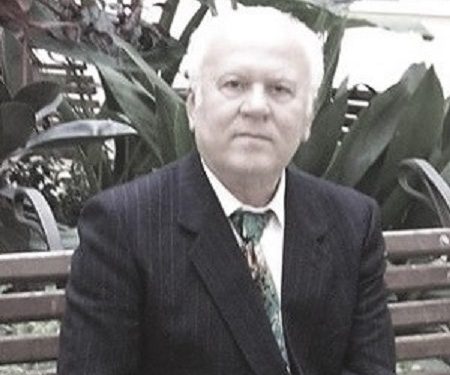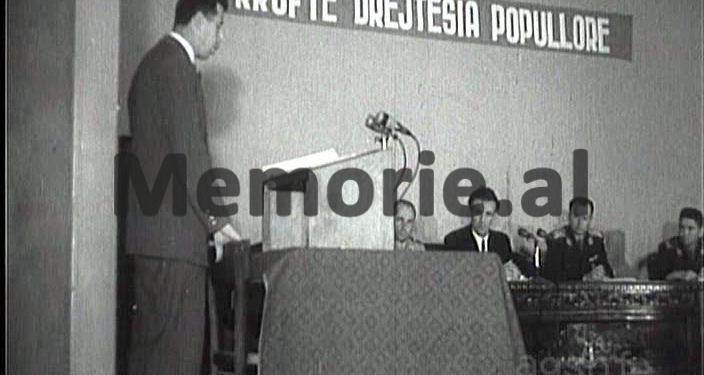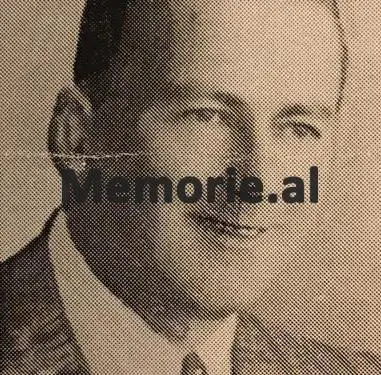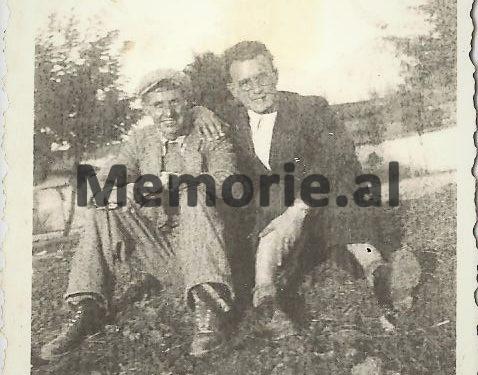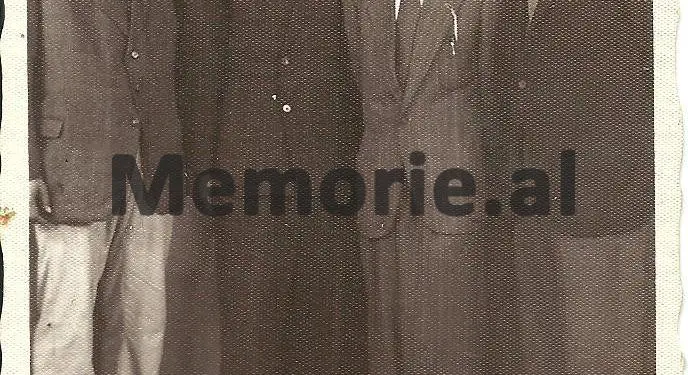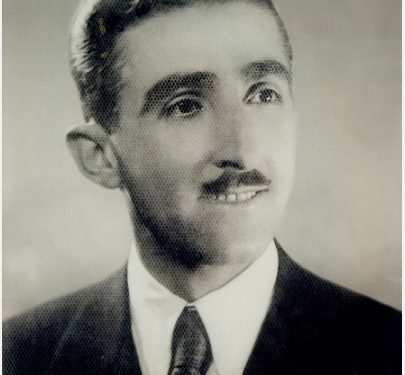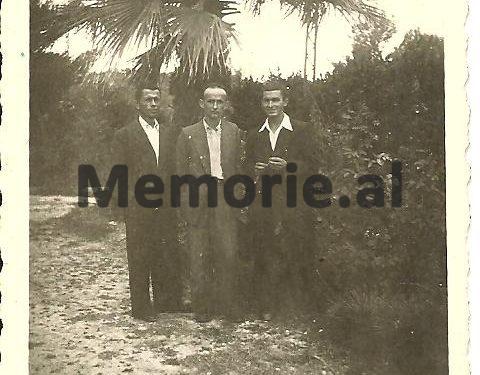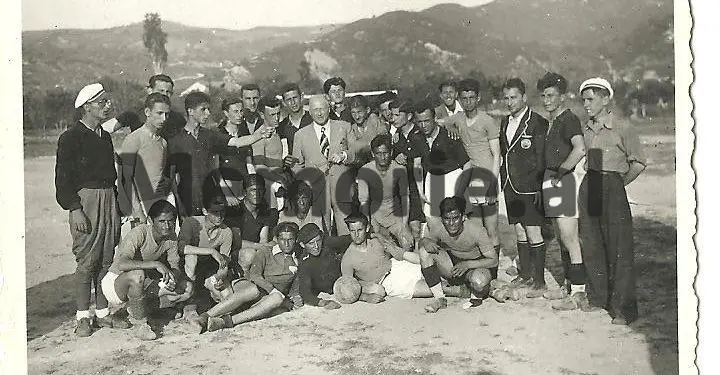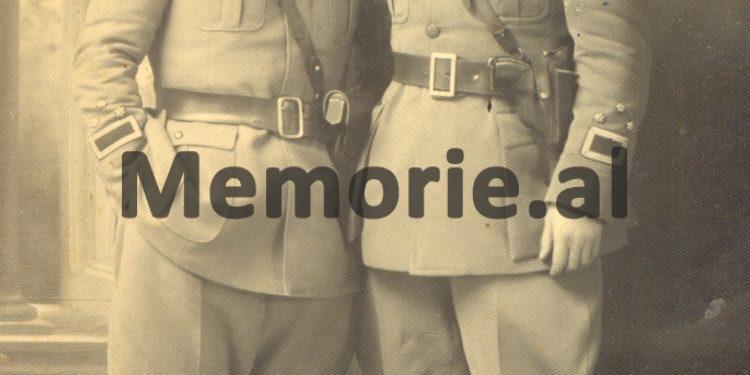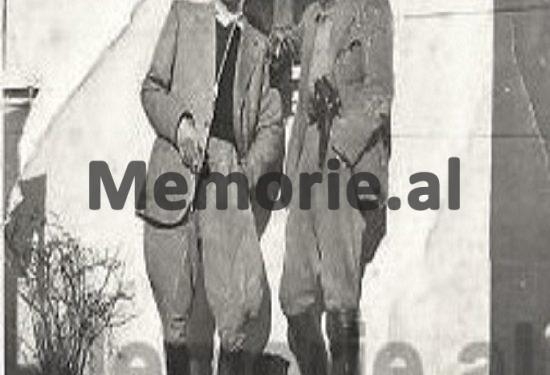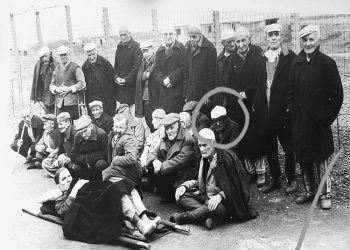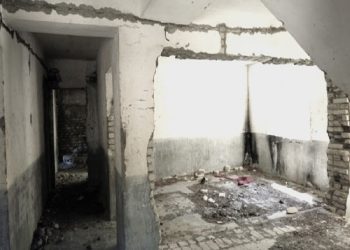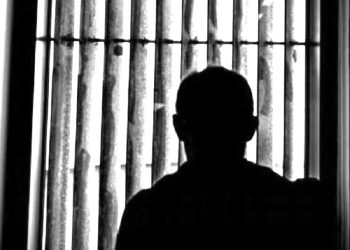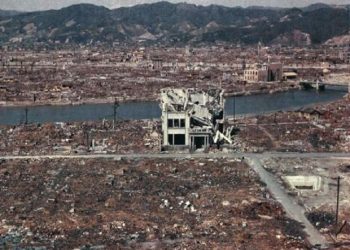Enver Lepenica
Memorie.al/ In 2001, analyzing Caf Jonuz Çulaj’s book, “Krushqit e Lirisë”, I underlined that the author, although without education, managed to publish a book on suffering in communist prisons, thus he became a significant example that man when led from high ideals, manages to leave traces in social life.
I thought that this was the only example that a prisoner without education publishes a book, but I was wrong, Caf Jonuzi from Malësia e Madhe responds in 2013, Aranit Hoxha from Vezhdanishti of Vlora with the book of many values of Vlora”
Two examples that make us think that if everyone felt the responsibility of Caf Jonuz and Aran Hoxha, the Albanian world would be completely different.
* * *
“The woes of communism in the region of Vlora”, is the encyclopedia of communist crime in the province of Vlora, with numerous statistical data and analysis of terror, violence and crime that was committed in the province of Vlora in the period 1943-1990.
The author, as Shpresim Kasaj has pointed out in the preface of the book, does not leave you thinking and leaves no doubt about the submissions he makes, the data, figures and facts he gives, as he identifies the convicts and the persecuted by name., fatherhood, surname, place of birth, date of birth, sentence and this is one of the great values of this book.
Even before, in Vlora, a group of convicts and political persecuted led by Fahri Shaska, set up an exhibition for the so-called “enemies of the people”, which Fari Shaska reflected in an album, but Aranit Hoxha’s book is more complete and we can say that it included all those Vlora people who were killed by assassinations, shot with ridiculous trials, died in prison or under inhuman torture, or suffered imprisonment, exile, deportation or barbaric communist persecution.
The book opens with the ranking of 13 names, who were the first to be killed, with the assassinations, by the communist guerrilla units, and continues with the identification of 114 other Vlora people killed during 1943, among them the names of 14 women and two teachers: Fejzi Hoxholli and Sulo Hoxha, the father of the author of this book.
The assassinations were carried out by the terrorist gangs of Hysni Kapos, Spiro Kolekë and Manush Myftiu through guerrilla units, set up in the Shiroke cave in Tërbaç. According to the advice and orders of Dushan Mugosha, the first assassinations with assassinations, the communists committed against their comrades: Mynyr Xhindi, Xhemil Çakërri, Neki Imeri, Xhafer Dalani, Haki Xhelo, Duro Elmazi, Faslli Kasaj, Selim Laçej continues the list with 17 itself.
Thus, the communists would take heart and would not tremble when they killed the garbage of Balli Kombëtar, as comrade Enver Hoxha said.
During 1944, 143 people were assassinated, and in total during the two years 1943-1944, 257 innocent Albanians were killed without trial and without trial.
In Bolena, two families disappeared, including a 17-year-old girl.
In Kuç, only 8 people, 5 men and 3 women, were shot by the Sadikaj family.
In Gorisht, mother and son Zenepe and Halim Çaushaj were killed at the door of the house and so on up to a shocking number, 257 killed.
Shocking and unbelievable is the fact that many of those shot were teenagers or children, so in Bolena they were killed, with the assassinations: Bilbil Çelomeme 14 years old, Fuat Çelomeme 19 years old, Dyzene Novruzaj, 19-year-old girl, Gani Çelomeme 17 years old.
Bajram Lamaj, who was only 16 years old, was killed in Treblova, and so the murders continue in Drashovic, Gorisht, Kuç, Gjorm, Kaninë, Lepenica.
Dissatisfied and not satisfied with the innocent blood of the 257 Albanians killed in the wartime assassinations, they continued to eliminate the “enemies of the working class” even after the liberation, in peacetime, which shows the inhuman face of the communists, but now not with assassinations, but with some ridiculous trials without bringing facts and legal evidence but only ideological, that those who were brought before the court, had been soldiers of the National Front, were doing agitation and propaganda, or wanted to flee to enemy states!
Sometimes figures speak better than any fiery human language, so the author rightly argues from the beginning to the end of the book communist crimes through figures, e.g.
The year 1945, was the bloodiest. This year, 46 innocent Vlora people were shot. Eight people were shot in May, 12 in June, six in July, and 20 in August-December.
In 1946, 17 people were shot. During this year, two engineers were hanged in Maliq: Kujtim Beqiri and Abdyl Kokoshi.
In 1947, 12 people were shot in 1948, 6 people, in 1949, 5 people, in 1950, 10 people, in 1951, 9 people were shot.
During the period 1952-1991, a total of 27 people was shot. In 1963, Remzi Shenaj from Gjormi was hanged on a rope in the middle of Vlora. We emphasize that this massacre was being carried out in peacetime!
Even after the liberation of the country, teenagers and children remained an inhuman prey for the communists, so politically convicted under the age of 20, in the book are documented 120 people, which for the people of Vlora at that time is a number that speaks clearly and will I always speak to history about the macabre crimes of the communists of Vlora.
Among them we mention: Bahri Çeprati 17 years old, Bejo Shaqiri from Dukati 15 years old, Zenepe Selimi 17 years old from Treblova, Klito Lamaj 17 years old from Kanina, Eqerem Malaj 18 years old from Ramica, Luan Llupa 17 years old from Vlora, Reshat Kripa 15 years old from Vlora , Petro Bollani 15 years old from Himara, and so on. For these children, the court was “merciful” and gave the lowest sentence only 5 years in prison!!!
The reader feels great pain when he sees that 85 political prisoners could not get out of prison, they died there from suffering and torture, there from starvation, lack of medicine and health care.
The grave of these unfortunates was lost forever because the communists did not allow corpses to be taken!?
Among the dead in prisons are prominent personalities of our history such as Qazim Kokoshi and Aristidh Ruci, signatories of the act of National Independence, anti-fascist fighters like Muço Sherifi who died at the age of 63, Elmaz Çarçani 70 years old, Pilo Goro 70 years old, Vasil Papa 72 years old, Niko Tola 63 years old and so on.
But there were also young people who died in prisons and lost their graves forever, such as: Uran Dulaj 29 years old, Dilaver Hysi 37 years old, Niko Kacelano 45 years old, Lekmi Sharra 33 years old, Agim Agaraj 34 years old, etc.
Unimaginable is the behavior of the communists towards women. In Vlora they shot 14 women, including Merxhane Sadikaj, Kafaze Birçaj and Refie Kondi from Kuçi, Veno Toto from Kudhësi etc.
They also died in exile from starvation: Lino Alikaj, Lahe Nuro’s mother, Perie Mustafaraj, Muço Çeprati’s wife, shot, died in Kruja, in 1946, together with two minor girls from starvation and lack of medical assistance.
In addition to the 14 women shot, 31 other Vlora women have suffered in prisons.
A great philosopher said: “From the attitude towards women, it seems to what extent man has become detached from the animal world.” The reader finds it easy to reason how far the Vlora communists were from the animal world!
The retrial of political prisoners was an unprecedented and unheard-of act in the history of world dictatorships, so the convict serving the sentence was re-convicted again with the same charge, or with other false charges!
Even after serving their first sentence, after a short time in freedom, many Albanian citizens were arrested and sentenced for the second, third, or fourth time, and so they spent their lives in prisons.
Out of 993 political prisoners in Vlora, 135 of them have suffered severe imprisonment, from 11 to 36 years in prison, it is not about sentences, but actually suffered.
Thus, for example: Kujtim Pela from Dukati has suffered in prison 36 years, Petrit Velaj from Vlora 36 years, Skënder Hallko from Vranishti 33 years, Nimet Mita from Dukati 32 years, Luan Koka from Vlora 29 years, Muço Bazaj from Gorishti 28 years, Mystehak Bylyshi from Vlora 25 years, Bardhosh Gjonzeneli from Tragjasi 23 years, Ahmet Thaçi from Vlora 23 years, Rizo Çizja from Bolena 22 years, Bejo Kali from Dukati 21 years, Dushan Koçiu from Panajaja 20 years, Artan Çeçi from Vlora 20 years , etc., etc.
After describing with complete data, the identity and origin of those who suffered the terror and violence of the communists, the author summarizes the suffering and horrors that the people of Vlora endured: 437 people shot, 993 imprisoned, 77 people killed in prisons, Years prison total 6951
After the submissions with numerous data, figures and facts, Aranit Hoxha goes on to describe the life of the deed and the reasons for the punishment of those who experienced suffering under the communist dictatorship, ie who they were and why they were convicted.
This was briefly what Aran Hoxha’s book, “The Woes of Communism in the Vlora Region” contains
* * *
Throughout the pages of this book we hear the sighs of prisoners, the farewells of those shot, the curses of mothers, the tears of sisters and wives, and especially the cries of young children who remained interned with their parents, by law, until 1953., when the deportation of children was no longer allowed.
This book talks about the terrible sufferings, tortures and persecutions that fell on men and women and especially on children only because they did not agree with the communist ideology, those communist torturers from Vlora flooded that patriotic province like wild beasts, sowing terror and black.
It impresses me and causes me spiritual pain, especially the description of the suffering, sacrifice and persecution of minors, women and those for whom no guilt has ever been proven.
Who would not be impressed, who would not be shocked when you read in this book that from the age of 14 children became victims and witnesses of numerous massacres and persecutions against their parents. Isn’t that shocking?
This is where a time of freedom came and people denounced and brought to light communist terror, violence and crime. A long time had passed and it seemed as if no one would ever dare to denounce the crimes of the Vlora communists. But history has its laws, so man should be afraid of history more than of God, because it is history that weighs and values us before and after death.
We are the only country, from the former countries where the communist dictatorship ruled, that we still do not have in school a subject to learn what the communist dictatorship was like, for example, a subject entitled “Albania under the communist dictatorship”
Even when attempts have been made in history to insert a chapter about that black period, former communists or crypto-communists, dressed in the guise of the Socialist Party, have protested! They do not want to remind their fathers!
When we are facing the phenomenon of communist terror, the question naturally arises: Has there been such a terror in other communist countries as well? The answer to this question was given by the communist Bilbil Klosi, in the capacity of the Minister of Justice of that period, in 1952, who openly stated: “In drafting the new Code we were inspired by the Soviet Criminal Code. “But given the repeated attempts for an uprising in our country, supported and led by foreign elements, we have been forced to impose stricter measures and punishments than those of the Soviet Criminal Code.” (See: “Album of communist terror”, Tirana 2013)
This is the reason why Bilbil’s cousin, Qemal Klosi, at the head of the District Court of Vlora 1944 – 1949, stabbed hundreds of nationalists from Vlora and Fier.
Aranit Hoxha, although at an advanced age with this publication, he is carrying out the message and will of his father, Sulo Hoxha, who was shot without trial, as well as that of other Vlora anti-communist patriots.
He should be praised for having the courage, albeit with modest opportunities, without education, to leave to future generations some data as a witness of that time of terror for the resistance and suffering against the red beast of Vlora and those who had sold their souls to the devil. Slavo-communists, who occupied the heroic Vlora with no faith.
The author of this book, the communists shot his father, after the suffering he endured under dictatorship, without proper education and at a broken age of 75, performed his last duty to the homeland left us memories of life, not personal and family but those for justice and humanism for his Vlora.
* * *
Aranit Hoxha tells us that the national consciousness has awakened and is acting in all areas of life. He gives us the best example of the obligation and mission that we must all contribute to denounce communist terror and violence.
The value of this book lies in the fact that it contains names, places, dates, age of the persecuted, prisons, murders, so it is based on irrefutable documents.
By reading this book we concluded; that much has been written, and again little has been written, and therefore we must return to this task and this mission.
In world history, we have examples of how scholars have returned to the violence and terror of different historical eras.
We need to see these books with the humanitarian eye, how Albanians lived the communist terror, how the children experienced the arrest of their father or mother, internment, public unmasking, etc.
Aran Hoxha’s work is an anthem and homage to those who were shot, or suffered under communist terror. To the characters of this book he has erected a well-deserved monument, he has consecrated the victims and invites us to honor and respect them, as a triumph over the hell of the past.
The message of this book is: justice and humanism. /Memorie.al





